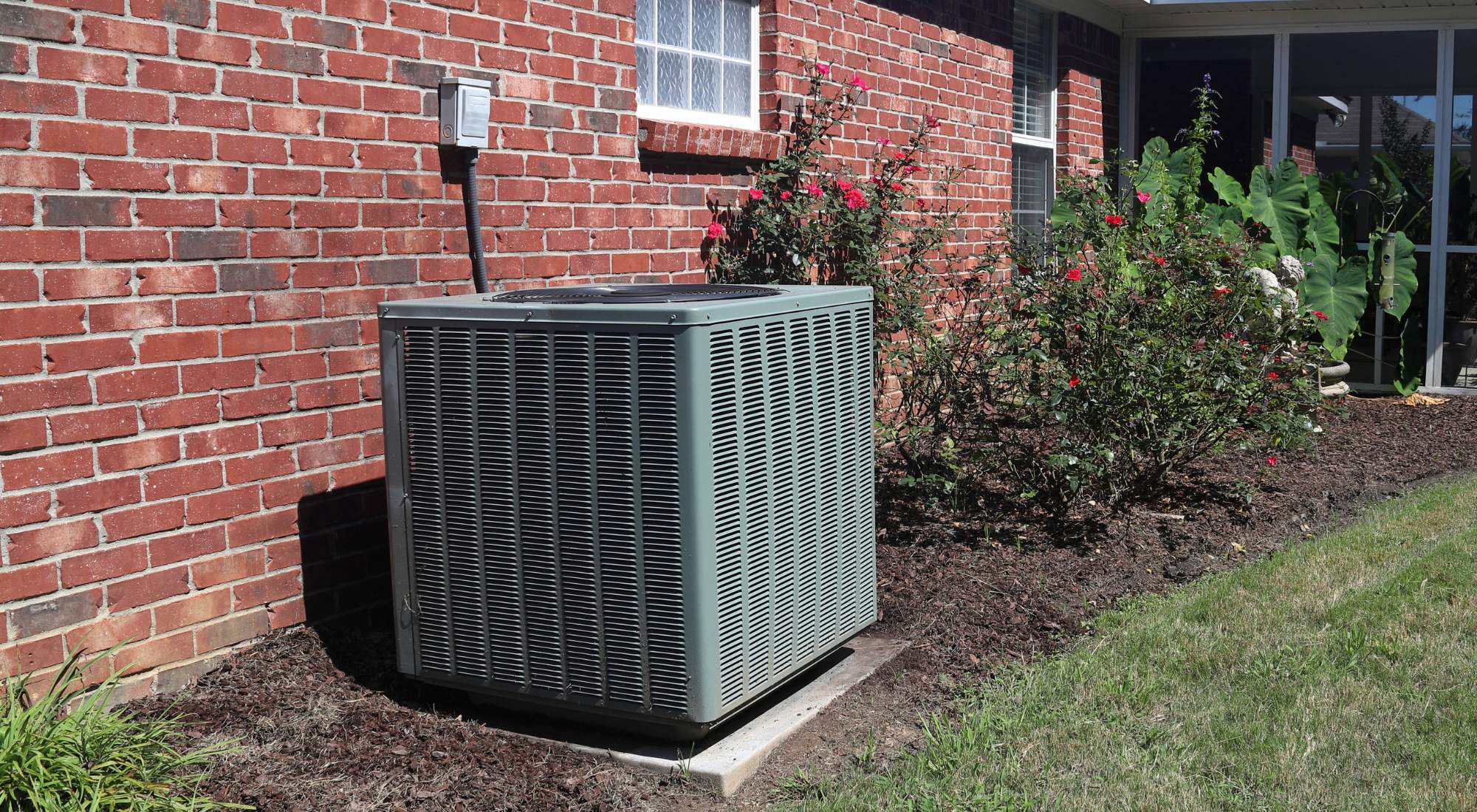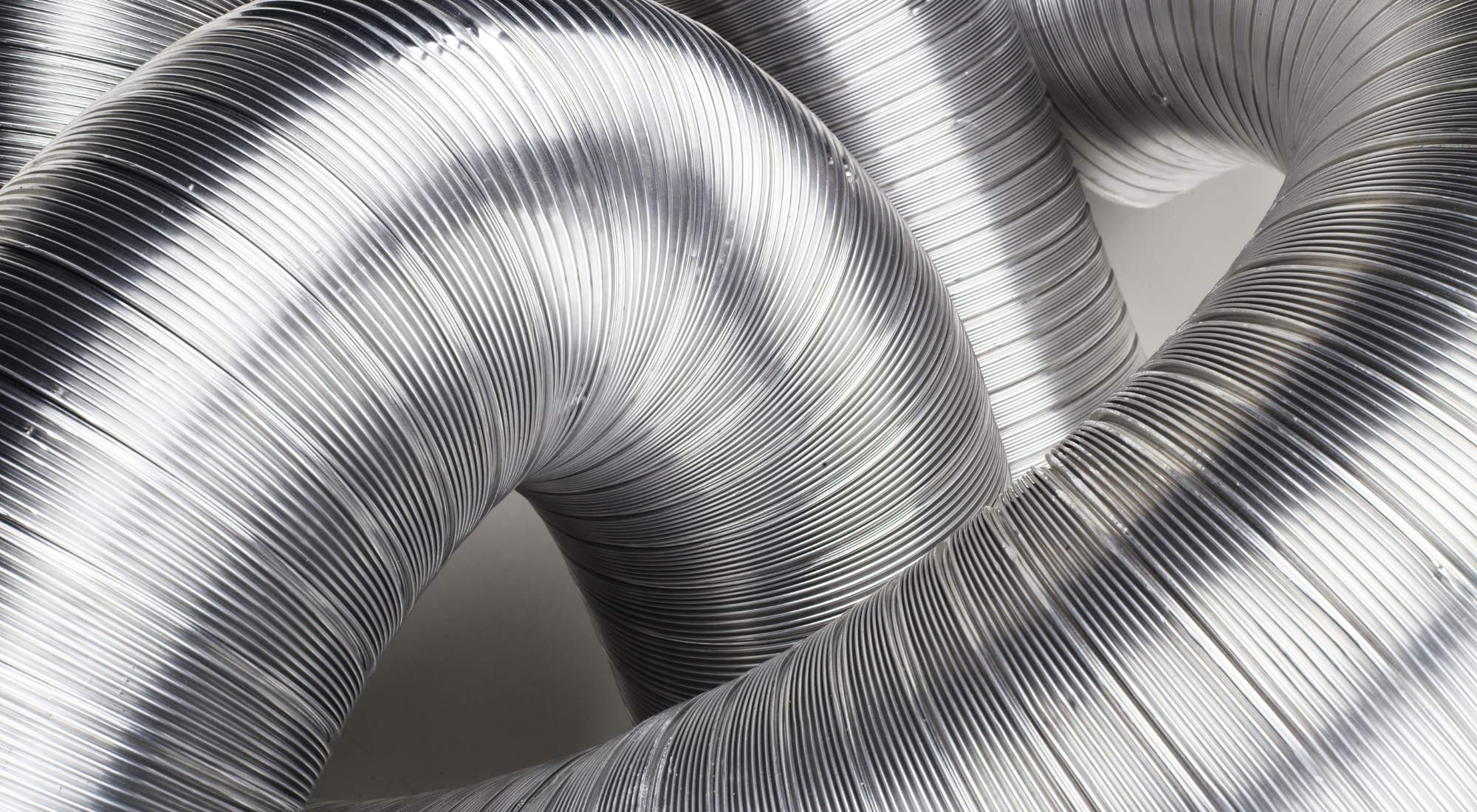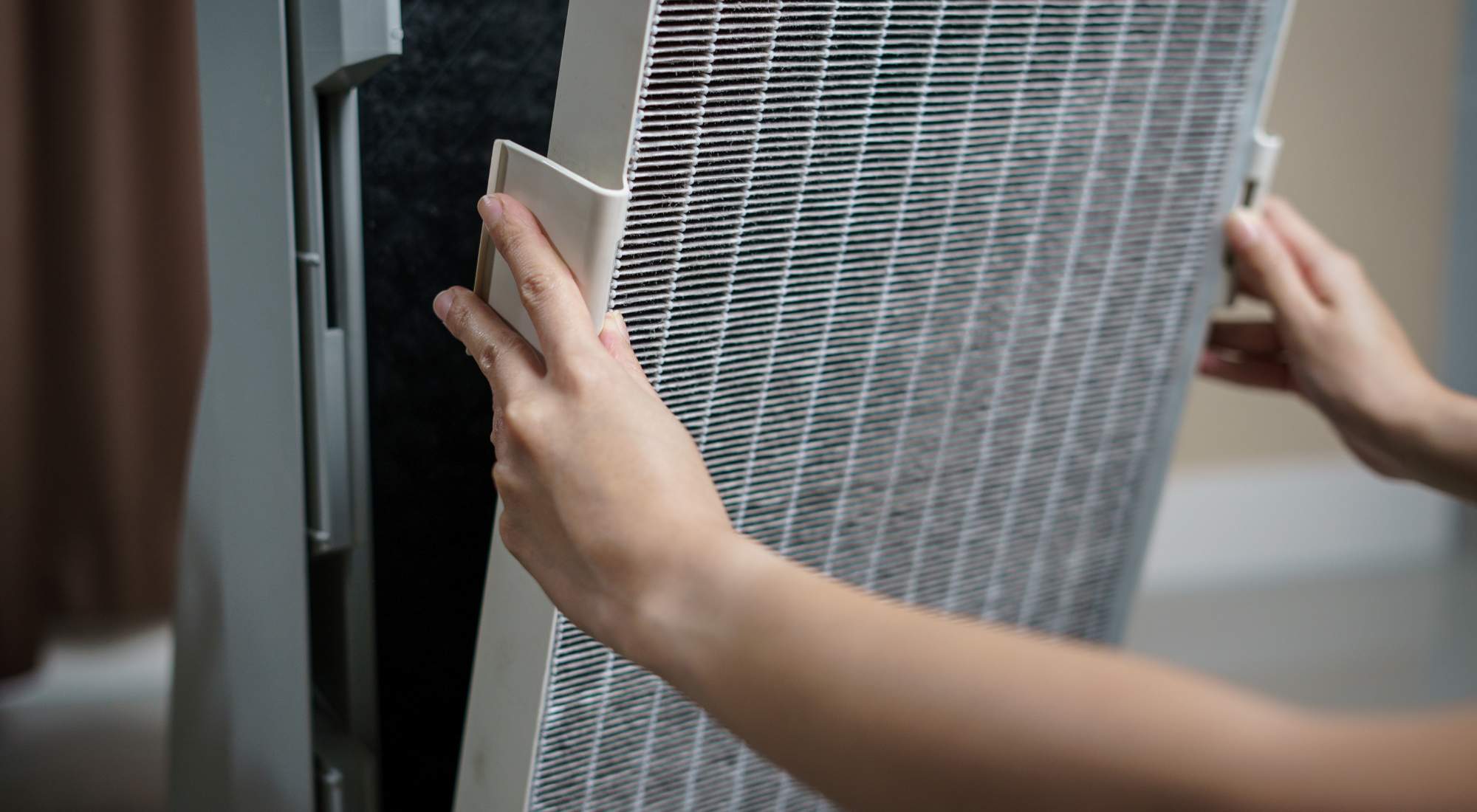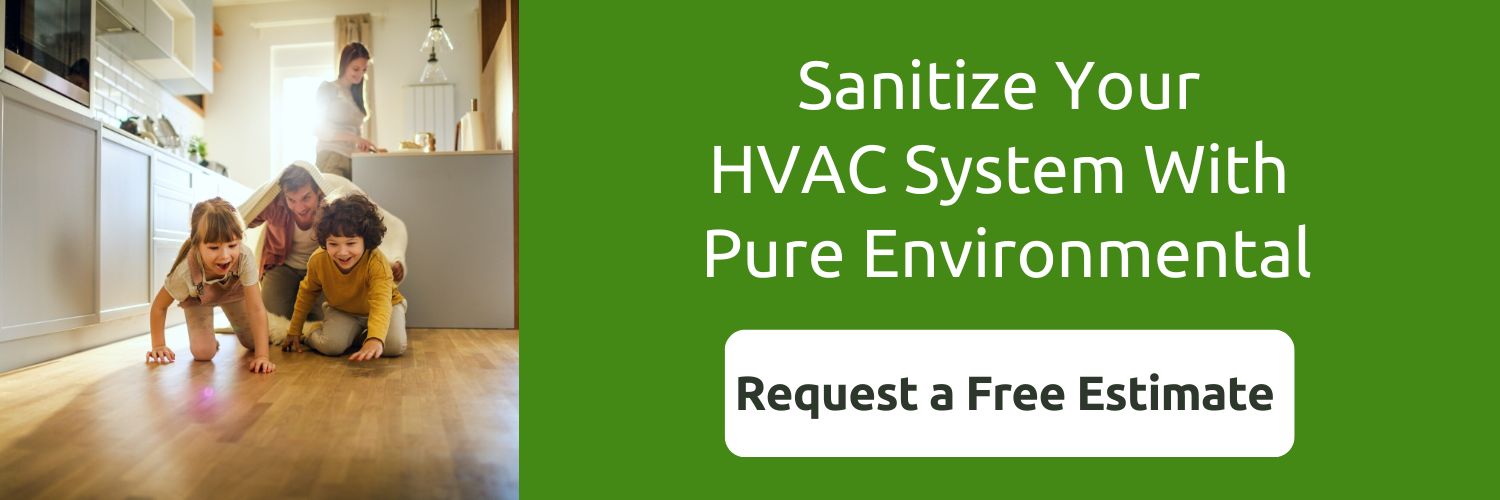You’ve likely heard the term HVAC and might even know what it stands for.
But if you’re like many homeowners, you may be in the dark about how your home HVAC system actually works.
If you want to be sure you have an HVAC system that’s running at peak performance and providing you and your family with the cleanest air possible, you need to understand how it operates.
This article explains how HVAC systems heat, cool, and ventilate your home. We also reveal one of the best options for ridding your home of indoor air pollutants and filling your home with pure, clean air.

Table of Contents
- What Is an HVAC System?
- How an HVAC System Works
- 3 Types of Ventilation Systems
- Are HVAC Systems Good for Air Purification?
-
Let Pure Environmental Rid Your Home of Indoor Air Pollutants With Our PurAyr™ Technology
What Is an HVAC System?
HVAC stands for heating, ventilation, and air conditioning.
While there are a number of different options when it comes to types of HVAC systems, they all do basically the same thing — take in fresh air and use a mechanical ventilation system to cool or heat it to a set temperature.
One component of an HVAC system is that it can serve multiple purposes. For instance, your home may have a furnace and an air conditioner — or just a single heat pump that handles both heating and cooling.
An HVAC system can also regulate humidity levels and increase the air quality in your home through the use of air filters that capture tiny bacteria, spores, and virus particles.
Generally, an HVAC system has three major elements:
- A cooling unit
- A heating unit; and
- Ductwork to move the air
Depending on the level of technology, these components may link to either a conventional thermostat or a smart, internet-connected thermostat that allows you to program the HVAC equipment through an app to help each component run at its peak.
How an HVAC System Works
Your HVAC system operates differently depending on whether the unit is heating, cooling, or providing ventilation to your home. Let’s take a look at the equipment required for each operation and how each process works to create a more comfortable living space.
Heating Your Home
Heating Equipment
Furnaces come in a variety of types and utilize various sources of fuel, including:
- Natural gas furnaces
- Electric furnaces
- Propane furnaces
- Oil furnaces; and
- Geothermal furnaces
Overall, natural gas furnaces are the most common, although electric heat is more popular in some parts of the country that experience mild winters or where the cost of gas is high.
The Process
Cold air from your home is warmed within your furnace’s heat exchanger.
Next, exhaust fuel from combustion is piped from your furnace through a vent and then blown via a fan inside the furnace. This process forces the newly warmed air through the ductwork in your home.
Cooling Your Home
Cooling Equipment
Most home HVAC systems include an air conditioner — particularly if the home has a gas furnace.
Heat pumps are another cooling option that works much like air conditioners. Traditionally, a heat pump is paired with an electric furnace, which boosts the heat pump’s ability to provide efficient heat.
The Process
To cool the air in your home, the fan in an air conditioning unit draws in air, then forces it out and over the unit’s evaporation coils. These coils are filled with a special refrigerant and cool the air by pulling the heat from it.
The air then moves into the air handler, where a blower forces it through your home’s ductwork. As the cool air passes through the ducts, any hazardous gasses produced during the cooling process are removed through the flue.
A heat pump works much like a home air conditioner, cooling the air by absorbing it through the refrigerant and expelling it out of your home.

Ventilating Your Home
Ventilation Equipment
A ventilation system refers to any attached system that helps process and move air throughout an HVAC system.
Ventilation systems generally include:
- Ductwork for holding the air that has been heated by the furnace or cooled by the air conditioner. Having an adequate amount of ductwork is a critical factor in an HVAC system’s ability to heat or cool. Hot or cold spots may result if there isn’t sufficient ductwork to carry the air.
- Floor, wall, and ceiling vents to distribute heat throughout your home.
- Various other ventilation shafts for removing excess heat, such as chimney flues or PVC ventilation for indoor HVAC equipment.
A home’s natural ventilation is important as well — with the ability to create cross-draft from doors and windows being a critical factor in maintaining a comfortable temperature.
The Process
The process of ventilating your home is all about cycling the air through the structure. This is accomplished as the return air vents in your home suck the air into the furnace.
Once in the furnace, the air will either be:
- Cooled
- Heated; or
- Scrubbed (stripped of things like air pollution, VOCs, pet dander, surface contaminants, odors, and dust.)
The treated air is then pushed back through the ductwork and spreads throughout your home.
3 Types of Ventilation Systems
There are a number of methods that may be used to ventilate a home. We’ll look at three common options.
#1: Exhaust Ventilation
Exhaust ventilation systems operate on the depressurization method and use exhaust fans to pull air only through vents, creating negative pressure. This negative pressure causes air to be pulled through the cracks and gaps in your home’s structure.
Exhaust ventilation is commonly found in kitchens and bathrooms.
Bathroom exhaust ventilation pulls odors and humidity from the air in a bathroom and releases it outside.
In a kitchen exhaust ventilation system, the air is sucked from the kitchen range, pulling out cooking moisture, any carbon monoxide from a gas stove, and cooking odors and discharging them outside.
There are also whole-house exhaust ventilation systems that work particularly well in colder climates. These central exhaust systems use a fan and a ventilation unit installed in the basement or attic to pull air through the ducts and then exhaust it outside.
Since it doesn’t remove moisture, the exhaust method of ventilation can make your HVAC unit work harder and increase your energy bills.
#2: Energy Recovery Ventilation
An energy recovery ventilation system (ERV) takes the exhausted, stale air from your home and discharges it outside while simultaneously pulling fresh air in from the outside.
The heat from the warm inside air mixes with the cool incoming air, and in summer, it cools down the warm incoming air. The energy recovery method helps prevent energy loss, thus reducing electricity bills.
There are two types of energy recovery ventilation systems:
- Heat-recovery ventilators (HRV) — These systems pull the heat from the air going outdoors in winter and transfer it to the incoming air to maintain warmth and air circulation.
- Energy recovery ventilators (ERV) — This type of system essentially does the same job as heat-recovery ventilators, with the added step of transferring humidity. During the summer, it transfers the moisture from the incoming air to the stale air going out, helping to control the humidity levels in your home. In winter, the humidity is pulled from the exhaust air and is added to the less humid incoming air.
Energy recovery ventilation systems are most effective in locations that experience extreme summers and winters along with high electricity bills. Energy recovery ventilation systems are typically more costly to install than other types of whole-house ventilation.
#3: Fresh Air Intake
In some states, HVAC systems are required to have a fresh air intake that pulls in air from the outside when the system kicks on.
Fresh air intake ensures that tightly packed commercial or residential buildings are getting fresh air for air exchange.
A fresh air intake system is mandatory in Washington, but not in Oregon. This type of ventilation system is usually beneficial. However, if the outdoor air quality isn’t good due to forest fires or high pollen count, and you don’t know how to shut the fresh air intake off, it could work against you.

Are HVAC Systems Good for Air Purification?
In general, no. Most HVACs have only a basic filtration system to capture particulates.
A filter’s ability to capture larger particles (from 0.3 to 10 microns) is measured in Minimum Efficiency Reporting Values or MERVs. This rating was created from a test method developed by the American Society of Heating, Refrigerating, and Air Conditioning Engineers (ASHRAE) and is helpful in comparing the performance of various filters.
The higher the MERV rating, the denser the filter media and the more effective the filter is at capturing specific types of particles.
HEPA filters have the highest MERV rating and effectively filter 99.97% of particles in the 0.3-micron range.
Unless your HVAC system is equipped with a HEPA filtration system, most HVAC systems are not highly effective at purifying air.
At Pure Environmental, we specialize in clean air. Contact us today to learn more about how we can equip your home or building with clean, filtered, air.
How Can My HVAC System Provide Better Indoor Air Quality?
The best way to obtain high-quality indoor air is by adding a HEPA air-scrubbing system that augments your current system — like the one installed by Pure Environmental.
This top-of-the-line system pulls the air out of your return ducting and scrubs it clean with a HEPA/charcoal system. It then injects the air back into the return to be circulated throughout our home.
The system also controls the blower, causing it to cycle air randomly throughout the day to remove as much particulate and VOC as possible. The HEPA air-scrubbing system doesn’t add anything to the air, but helps remove the contaminants that remain from your current HVAC system.
There are other types of air filtration systems that utilize UV light and ozone to sterilize the air and neutralize bacteria, mold spores, etc. However, the effectiveness and long-term implications of these systems have not been proven, and many industrial hygienists don’t support them.
Pure Environmental believes that the best way to approach filtration is through the use of charcoal and HEPA air scrubbing. Not only is the method inexpensive and effective, but it is also capable of cleaning the air much more efficiently than most furnaces do.
Let Pure Environmental Rid Your Home of Indoor Air Pollutants With Our PurAyr™ Technology
Pure Environmental’s PurAyr™ process utilizes a science known as Advanced Oxidation Process (AOP). This high-tech, residue-free system safely and effectively eradicates airborne, surface, and embedded organic contaminants.
PurAyr™ creates internal reactions between UV light and titanium dioxide nanoparticles to generate massive levels of Ozone (O3), Hydrogen Peroxide (H2O2), and Hydroxyl Radicals (*HO). These oxygen-rich gasses react with organic compounds in your air, breaking them down into simple elements before falling back into oxygen (O2). This process is typicaly used in specific situations like deodorization of cigarette smoke or urine odors.
The PurAyr™ process rapidly oxidizes odors, bacteria, and VOCs — all without the use of chemicals. And it doesn’t produce nitrogen oxides that are found in traditional ozone-producing technologies.
Are you ready to improve the quality of air in your home? Call Pure Environmental today for a free estimate.
Recent posts
- Advice From the Pros: How To Hire a Contractor for Home Renovations
- After the Fire: What To Expect From Smoke Damage Restoration Services
- Home Insurance During Renovations: What Is Covered and What To Know Before Getting Started
- Mitigation and Restoration: Understanding the Difference Between the Two and Why They’re Both Necessary
- Should You Stay or Should You Go? Know When To Walk Away From a House With Mold
